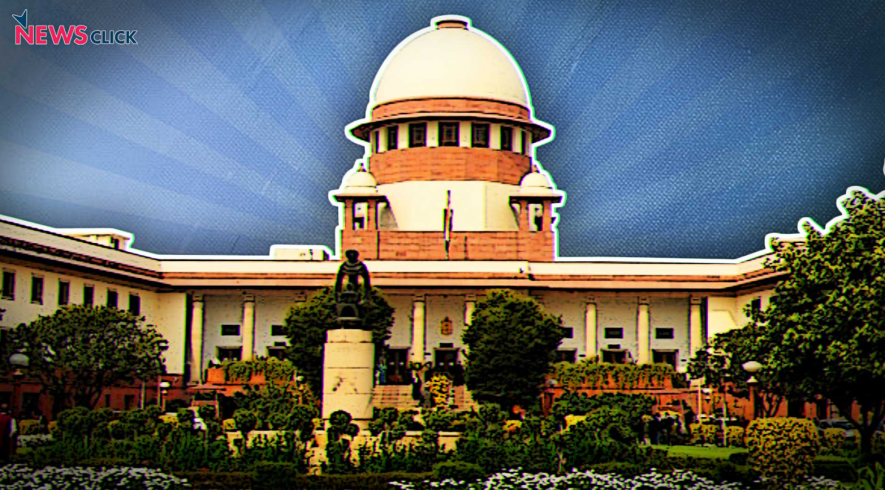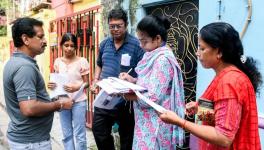EWS Verdict Raises Issues of Caste Census and Diversity in Apex Court

It has become a pastime among citizens to predict on the eve of every Supreme Court judgement whether it would favour or go against the Modi government. It is undeniable that in all crucial cases—such as Sahara-Birla, Justice Loya, Bhima Koregaon, Rafale, Aadhaar, CBI-Alok Verma, Ayodhya, etc.—India’s apex court did not make the government blush, let alone worry.
It was thought the judicial wind would, for once, blow against the Modi government’s January 2019 decision to grant 10% reservation to the Economically Weaker Sections. The decision, it was argued, upturned the principle that social and educational backwardness, not economic deprivation, ought to be the basis for granting reservations to social groups; that it removed the Supreme Court-mandated 50% cap on quotas; and that it was exclusionary as it kept the Scheduled Castes, Scheduled Tribes and Other Backward Classes out of the EWS ambit.
Alas, the Supreme Court upheld the government’s law through a verdict split 3:2. Once again, it will be said the Supreme Court saved the government from the bother of rethinking its policies or changing the path it has been treading since May 2014, the year Narendra Modi became Prime Minister. Leave it to legal luminaries to dissect the EWS judgement over the next few days.
For the present, though, it is pertinent to explain the three possible fallouts of the 7 November judgement. One, it will renew the debate, with greater ferocity, about why the Supreme Court has become the preserve of the upper castes. Some may even demand a quota among the apex court’s judges. Two, the judgement, willy-nilly, makes stronger the case for a caste-based census. Three, it may become a catalyst for introducing caste-based proportional representation in government jobs and seats in educational institutes.
Caste in Supreme Court
The Supreme Court’s EWS judgement was delivered by a five-member bench, none of whom was an SC, ST or OBC. It may be argued that the EWS quota affected only the socially and educationally advanced groups, particularly the upper castes, and no other categories of social groups. This is certainly not the case, as this piece of mine argued.
Questions will be asked whether a more socially diverse bench or the Supreme Court would have struck down the EWS quota as violative of the basic structure of the Constitution. This is not to attribute a caste bias to the three judges who upheld the 10% EWS quota, more so as the two judges who dissented from the majority judgement also belonged to the elite social group.
Rather, it is to point to the age-old debate among legal scholars and sociologists about whether the social background of judges influences their verdicts. Sonia Sotomayor, currently an associate justice of the Supreme Court of the United States of America, raised a storm when she, in 2001, said, “Whether born from experience or inherent physiological or cultural difference, our gender and national origins may and will make a difference in our judging.” Justice Sotomayor is Hispanic by birth.
The New York Times reported Sotomayor saying she also “approvingly quoted several law professors who said that to ‘judge is an exercise of power’ and that ‘there is no objective stance but only a series of perspectives… Personal experiences affect the facts that judges choose to see.”
Sotomayor’s point was raised, albeit implicitly, by John Brittas, a Rajya Sabha member of the Communist Party of India (Marxist), in his maiden speech in Parliament in December 2021. He reeled out figures to point out that the upper castes, particularly Brahmins, dominate the Supreme Court. Brittas said, “Out of 47 Chief Justices of India to date, at least 14 have been Brahmins. From 1950 to 1970, the maximum strength of the Supreme Court was 14 judges—of whom 11 were Brahmins. From 1971 to 1989, the number saw a further spike, and 18 judges were Brahmins.”
But Brittas did not stop there, even as Bharatiya Janata Party members heckled him. Pointing out that although Brahmins hardly account for 4% of India’s population, Brittas said that “irrespective of who is in power, the average 30-40% representation of Brahmins in the Supreme Court has remained constant.” He said the situation was not likely any different in High Courts, citing the example of Karnataka, where 17 out of 45 of its High Court judges then were Brahmin.
In a piece in the Indian Express, Brittas cited these figures and named Brahmin judges whose pronouncements and activism had helped “enrich the nation and armed millions in their aspirations to secure justice”. He, however, added, “But should we shut our eyes to the fact that our highest court did not have a judge from the OBC, SC or ST communities until 1980?” The representation of these groups in the Supreme Court remains abysmal.
Indian media has always been wary of examining the linkage between the social background of judges and their judgement. Then Vice-President Venkaiah Naidu thought Brittas’ speech was “wonderful”. But he, rather dolefully added, “Next day [after Brittas spoke], to my disappointment, not a single line was reported in the national media.”
Recently, the Supreme Court collegium, headed by Chief Justice UU Lalit, recommended four names for elevation to the apex court—Justices Ravi Shankar Jha, Sanjay Karol, and PV Sanjay Kumar and Senior Advocate KV Vishwanathan. Thus, 50% of them are Brahmin, and the remaining belong to forward castes. The recommendation got timed out as the “one-month rule” kicked in—chief justices are expected not to make such proposals within a month of their retirement.
Nevertheless, Senior Advocate of the Supreme Court Sanjay Hegde said to me, “Collegiums pick ‘people like us’. They have no incentive to look for diversity, and even their diversity appointments tend to pick people ‘almost like us’.”
Questions regarding the social composition of the Supreme Court will now be asked with even greater urgency, not least because at least two judges who delivered the majority opinion on the EWS issue questioned the need for continuing reservation 75 years after Independence.
Caste Census
In 1990, the VP Singh government implemented the recommendation of the Second Backward Class Commission, headed by BP Mandal, to grant 27% reservation to the OBCs. The commission had estimated that the OBC accounted for 52% of the population. Yet it did not recommend OBC reservations in proportion to their population, as had been done in the case of SCs and STs. Why?
Mandal’s reply was that he did not wish to violate several Supreme Court judgements capping reservation at 50% of all vacancies in government jobs. “In view of this, the proposed reservation for OBCs would have to be pegged at a figure which, when added to 22.5% for SCs and STs, remains below 50%,” Mandal argued.
The Supreme Court judgement upholding the Modi government’s 10% EWS reservation has now, effectively and for all times to come, removed the 50% cap. This only bolsters the case of OBC leaders that their category of communities should enjoy reservation equivalent to their numbers. Some claim Mandal’s estimate of the OBC population (52%) was grossly exaggerated. No, argue others, saying their population would be nearly 70%, including castes such as the Patels, Marathas and Jats, who are outside the OBC reservation pool.
This is one reason why OBC leaders have been demanding a caste-based census, arguing that social justice cannot be done without a proper fix on which caste is how much. In 2011, a socio-economic and caste census was carried out, but its data still remain under wraps. The Modi government has been stonewalling the demand for a caste census.
Proportional representation
One reason why it has been stonewalling the demand for caste census is that it fears subaltern social groups will take to demanding representation in accordance with their population. Acceptance of such a demand would, obviously, put a squeeze on the upper castes, which are counted among the most steadfast supporters of the BJP. The judicial upholding of the EWS quota renders invalid the argument that proportional representation cannot be granted as there exists a 50%-cap on reservations.
It is also likely that a caste census would show the upper castes to be far less than 20% of India’s population, as is assumed. This is likely to spark an outcry against the inherent injustice of a privileged community cornering the largest share of government jobs and seats in educational institutes.
Manoj Jha, the Rajya Sabha MP of the Rashtriya Janata Dal, said to me, “The EWS judgement of the Supreme Court, which was not a unanimous one, has opened up the possibility for conducting a caste-based census and providing for proportional representations in jobs and admissions to educational institutes.” Indeed, the EWS judgement has re-opened the caste question, and much will depend on the kind of campaign that subaltern leaders will launch to enforce their rights.
The author is an independent journalist. The views are personal.
Get the latest reports & analysis with people's perspective on Protests, movements & deep analytical videos, discussions of the current affairs in your Telegram app. Subscribe to NewsClick's Telegram channel & get Real-Time updates on stories, as they get published on our website.
























